Pulse
An innovative blood donation app that motivates young people to donate regularly.
Problem
In Germany, there is an annual shortage of 2.5 million blood donations – a deficit that exists because only 3% of the population donates regularly. Young people in particular rarely or never participate in blood donations, as the topic is often not present in their daily lives. This is exactly where Pulse comes in: an app designed with targeted features to appeal primarily to young people and motivate them to donate blood regularly.
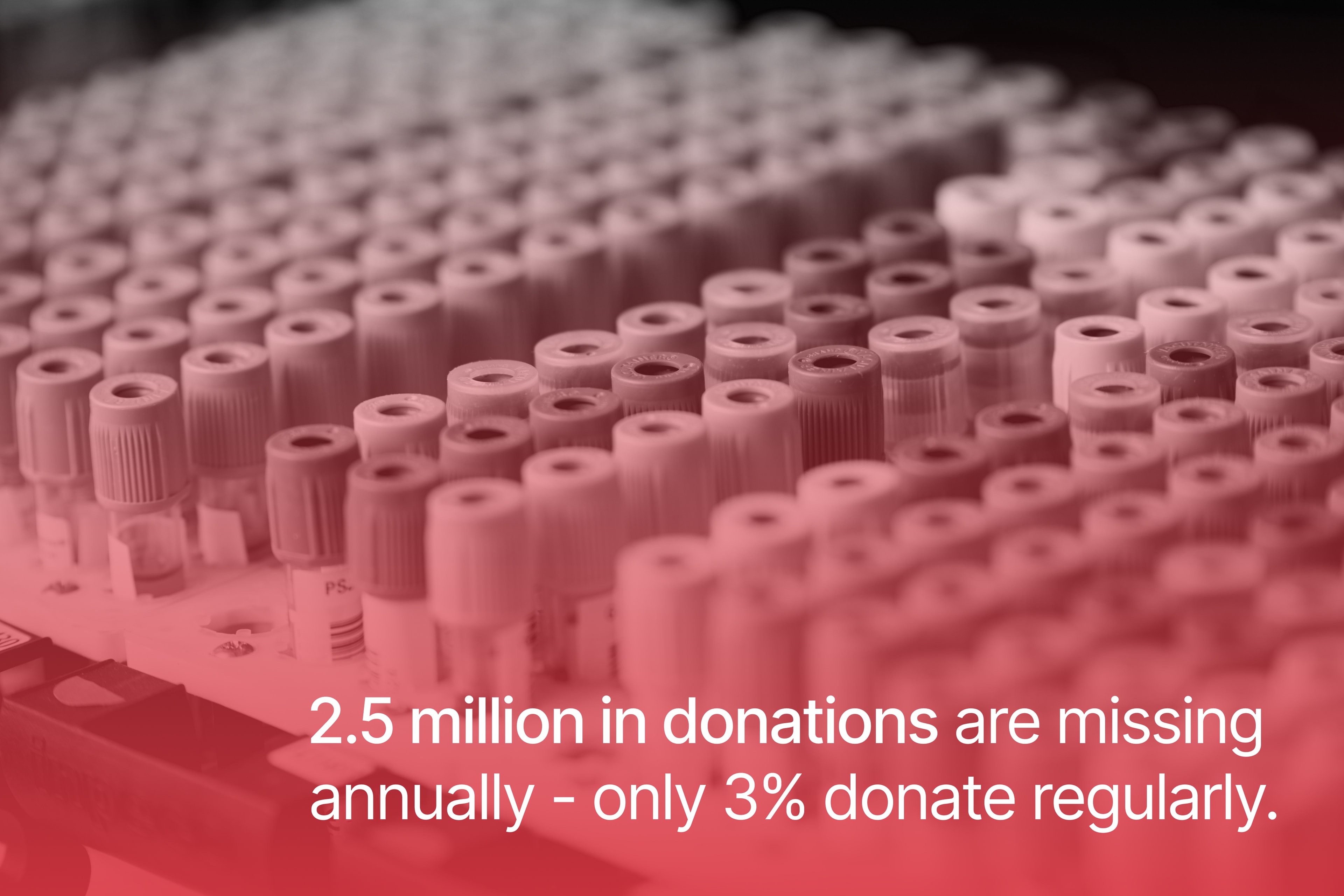
Research
In our research phase, we used various methods to gather insights for the design process. We conducted online surveys, performed shadowing by accompanying a person during a blood donation, analyzed the German Red Cross forum, conducted interviews, and spoke with officials on-site at the German Red Cross.
Poster Creation
To reach people beyond our immediate circle we quickly designed a set of posters, printed them ourselves, and put them up in cafés and small neighborhood shops around Schwäbisch Gmünd. Each poster carried a short, friendly call to action plus a QR code that led straight to the survey.
The posters sparked plenty of curiosity. Shop owners mentioned them to regulars, friends shared the link in their group chats, and within a single weekend our responses doubled. Most importantly, we started hearing from people who had never crossed paths with our digital channels before.
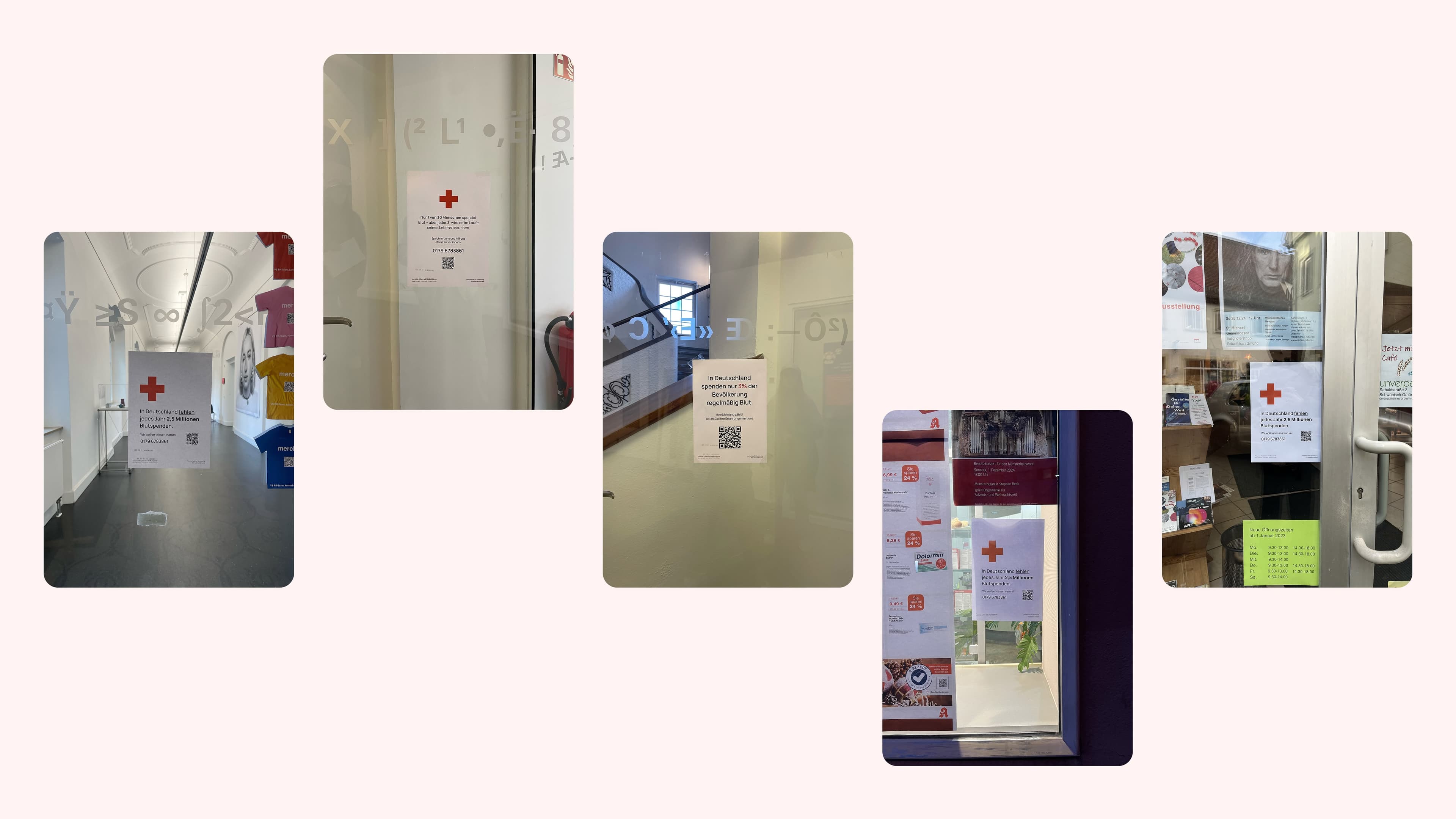
Survey
Our study with over 80 participants provided valuable insights into blood donation behavior and attitudes. The data collected formed a solid foundation for the development of the Pulse concept.
Almost nobody we spoke to knew that the German Red Cross already has a blood donation app. Only a handful had even heard about it, which confirmed that basic awareness is still missing long before usability becomes an issue.
Age Distribution
- Under 3019%
- 30–5044%
- Over 5037%
Donation Knowledge
Interest in Donation
Our survey shows clear age differences in donation habits. Only 19% of people under 30 give blood regularly, compared with 37% of those over 50. At the same time, 54% of participants were unsure about basic eligibility rules. Even though interest is high—76% say they would like to donate—many never turn that intention into an actual appointment.
DRK Assumptions
In workshops with the DRK team we collected further assumptions about why donations stall. The nine themes below capture the beliefs we aim to validate and transform through better communication, tooling, and ongoing support.
Perceived financial motivation
Some people believe donations are driven mainly by financial incentives or assume others will cover the need, so their own contribution feels less important.
Low return rate after the first donation
Many don’t come back because the effort feels too high or they underestimate the benefit for the wider community.
Complex booking and registration
The process for finding an appointment and signing up is perceived as confusing and time-consuming.
Lack of visibility into demand
Without clear signals about current blood shortages or public reminders, people donate less regularly.
Unclear donation logistics
It’s often unclear where, when, and how to donate, or which steps are involved on site.
Eligibility misconceptions
People assume they cannot donate because of age, health, or lifestyle factors—even when they meet the criteria.
Fears around the procedure
Anxieties about needles, medical settings, or feeling exhausted afterwards stop many potential donors.
LGBTQ+ uncertainty
Many queer people are unaware that donation rules have been relaxed and fear prejudice or doubts about safety.
Low awareness of DRK digital tools
Few people know the German Red Cross already offers a blood donation app or similar services.
Shadowing
On 28 October we asked a participant to book a blood donation appointment via the DRK website. Two days later we accompanied him to the appointment, observed every step, and conducted a short interview to understand how it felt from start to finish.
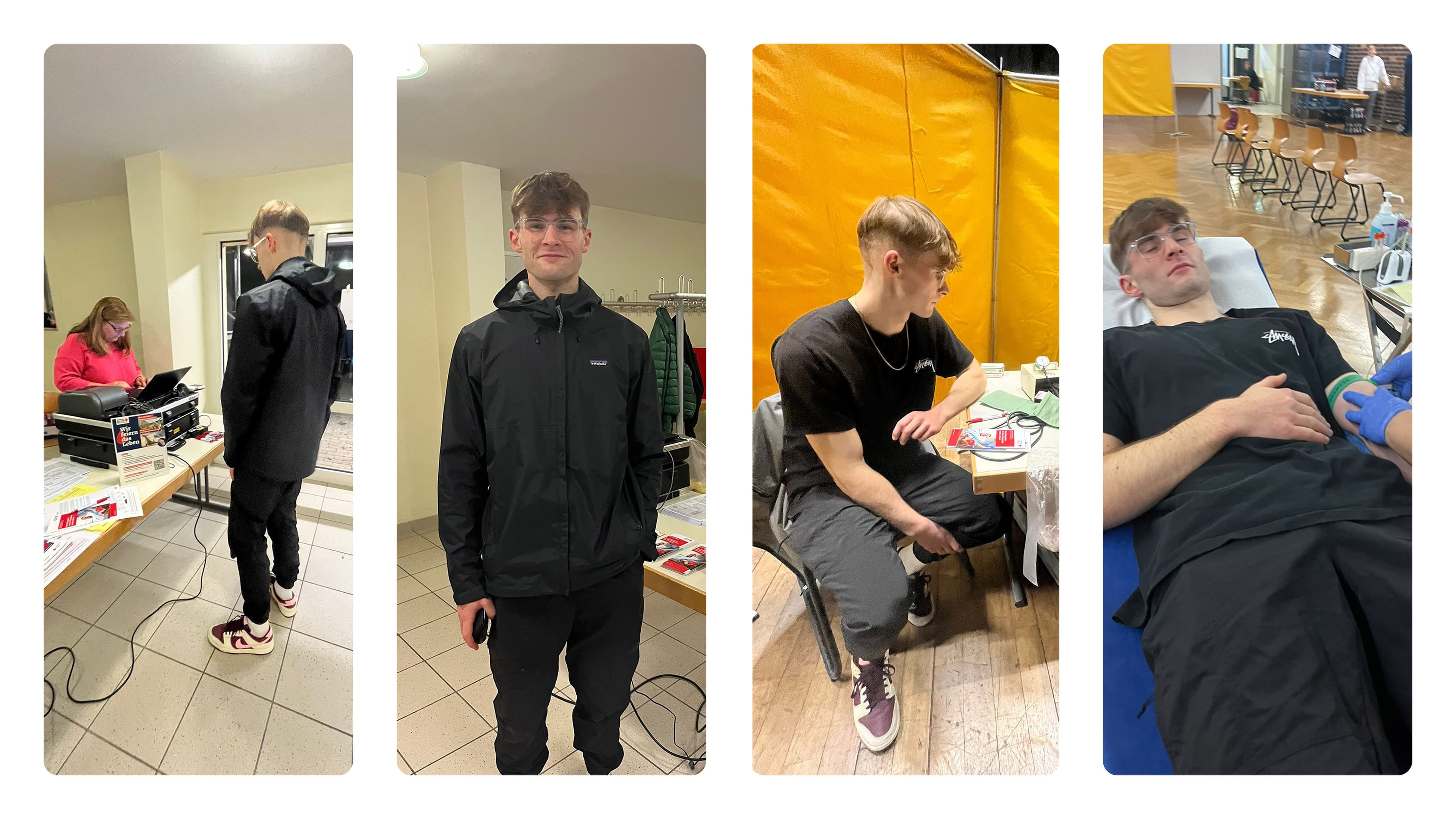
The insights below highlight what Lars struggled with most during the journey—from the online entry point to the final medical conversation.
“This all feels so negative.”
The intense red landing page felt overwhelming. Lars struggled to know where to look first and started with a negative impression.
“I can’t continue without a donor card.”
The “Without donor card” option was barely visible, so he assumed the appointment wasn’t possible without one.
Language barriers
The data privacy form must be filled out in German. Without language support, non-native speakers can’t complete the process even with a translator.
Missing nutrition guidance
Lars didn’t know he should eat more throughout the day, so he arrived underprepared.
Time and paperwork burden
The visit took roughly 80 minutes, including 15 minutes of repetitive paperwork that must be redone each time.
Pre-screening expectations
Before the medical check, the doctor insisted he read the entire “What to know before donating” brochure, adding another mandatory step.
Frequently Asked Questions and Concerns
From forum analysis (DRK) and interviews we distilled repeating uncertainties that hold potential donors back. These six questions appeared most often.
User Personas
Interviews, user shadowing, and surveys led to three main user personas. Direct observations and in-depth interviews provided valuable insights into their needs.
Anna Himmel
“I would like to donate blood, but I've never done it before and I'm not sure if I'm even eligible.”
Thomas Beck
“I have been donating blood regularly for 25 years, because my father was saved by a donation. For me, it's a given.”
Harald Dinkelberg
“I would like to donate blood, but because of my chronic illness, I'm not allowed. I still want to help.”
Interviews
We spoke with six people for 15–30 minutes each via Google Meet. They brought different donation histories, which helped us compare first-timers, regular donors, and those who stopped donating altogether.
First-time motivations
Most interviewees donated for the first time because someone close encouraged them, out of curiosity, or to help others in a tangible way.
Promotion triggers
Family, friends, posters, hospital staff, and targeted ads inspired people to try donating and share the experience.
On-site experience
Overall the staff and organisation were praised, yet the paperwork volume, scattered booking sites, and language barriers still caused friction.
Clarity on rules
Many remain unsure about deferral criteria or how often they can donate, which leads to hesitations between appointments.
App awareness and gaps
The DRK app is known but rarely used; interviewees wanted easier booking, clearer supply data, and meaningful personal insights.
Boosting willingness
People asked for streamlined paperwork, better updates, gentle incentives, and a stronger community feel to motivate repeat donations.
Motivating features
A live blood barometer, smart reminders, gamified milestones, and inviting friends were all seen as high-value nudges.
Ideation
Through a structured ideation process, we developed creative solutions to address the key challenges identified during our research phase.
How Might We Questions
From the user flow, we formulated “How Might We” questions, which were prioritized accordingly. This enabled us to tackle the most important challenges directly and focus on innovative solutions.
Long wait times and complicated procedures especially discourage first-time donors and busy individuals.
Young people often lack an emotional connection to the topic of blood donation, which is essential for long-term engagement.
A lack of knowledge about donation requirements and the actual process poses a major barrier.
From Problem to Solution
Using a structured ideation process, we transformed the identified problems into concrete solution approaches. The iterative process included various creative techniques and continuous testing of hypotheses.
Analyze user research findings and identify key pain points in the blood donation process.
Rephrase the identified problems into specific design challenges.
Development sessions and creative workshops with various stakeholders.
Group and prioritize ideas based on innovativeness and feasibility.
Develop the most promising ideas into feature concepts; visualize and test with potential users.
Next we explored the structure of the experience through wireframes, mapping the main journeys and defining which features belonged in each flow.
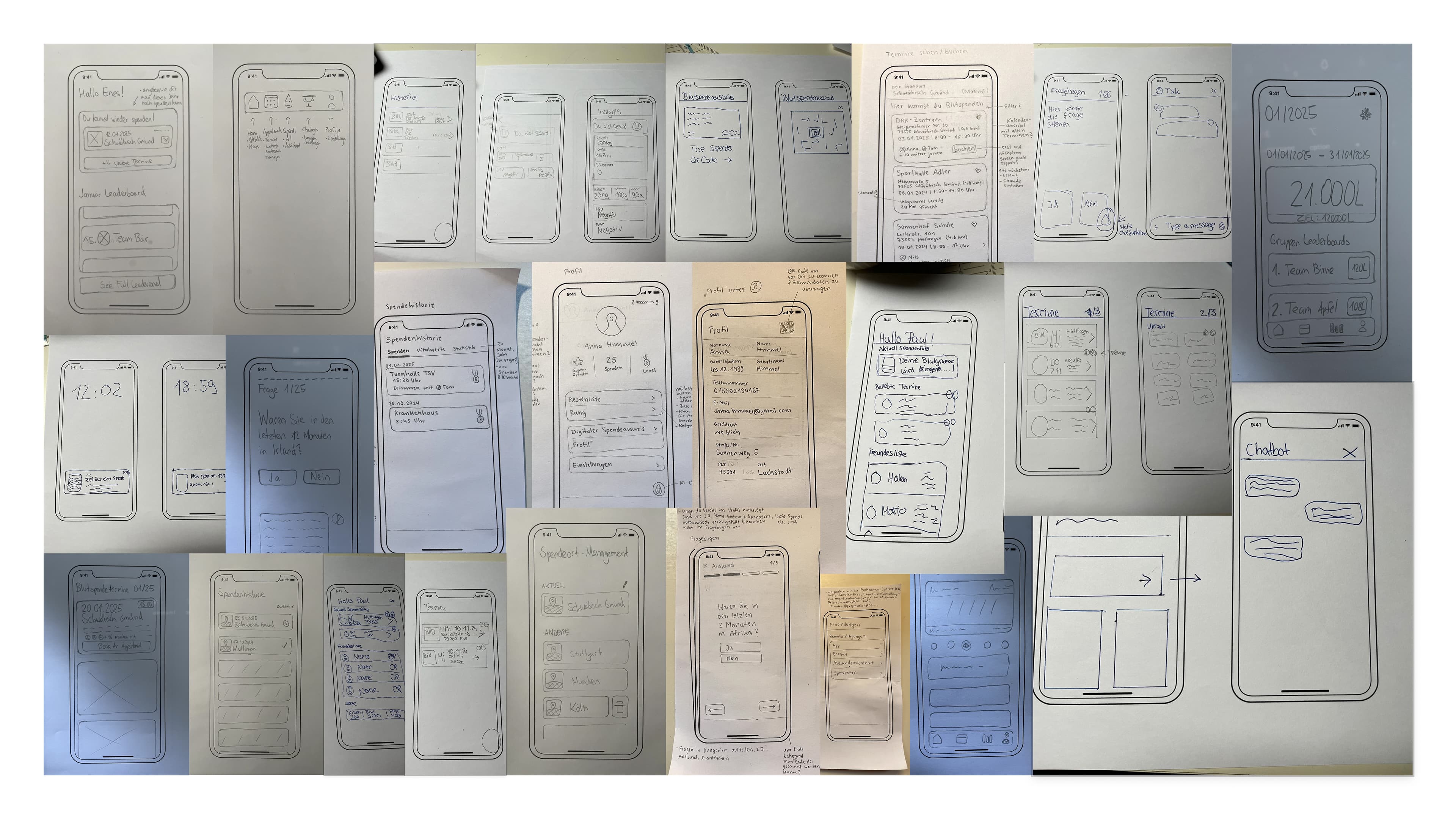
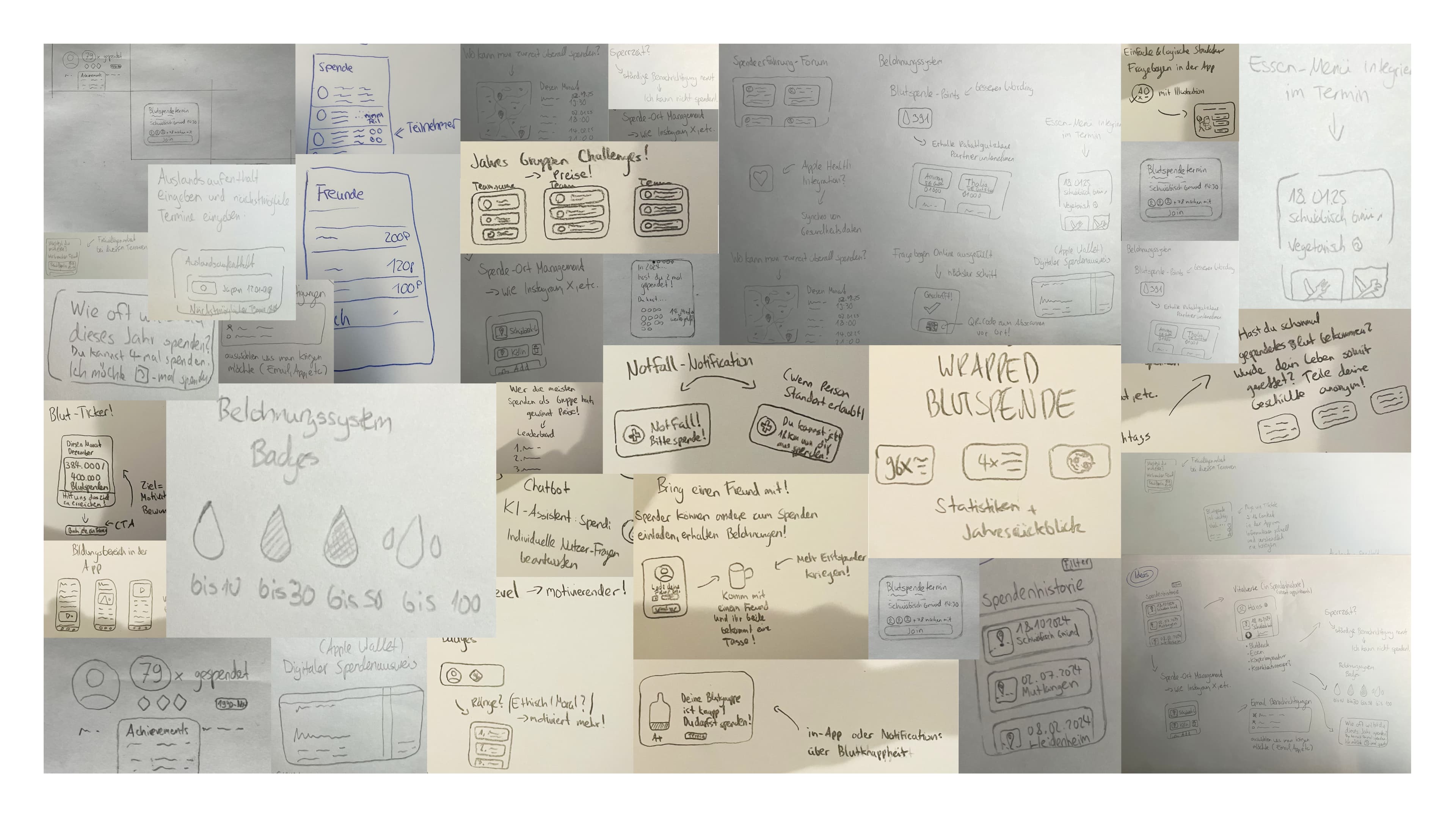
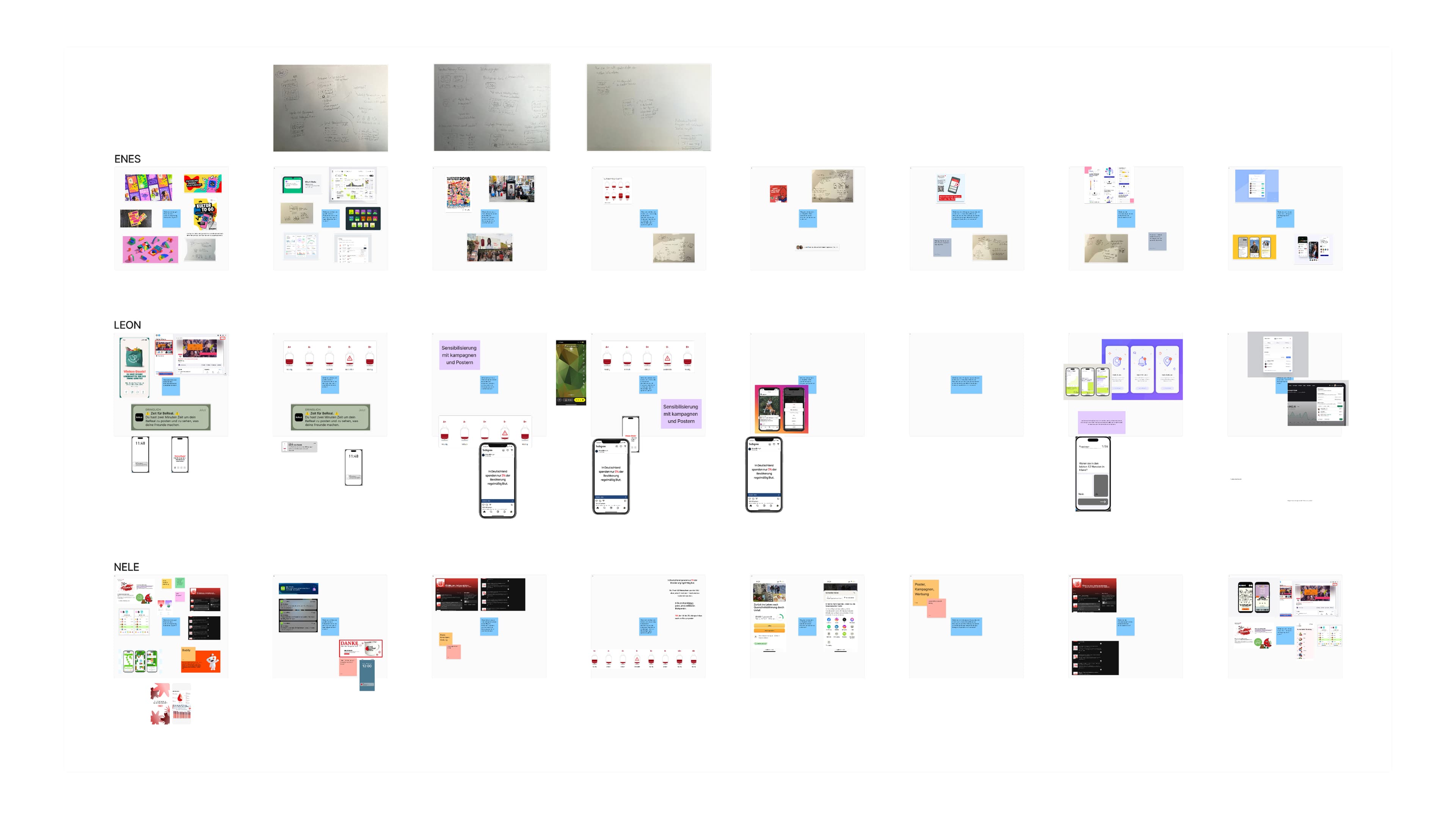
User Journey
Mapping the complete journey helped us connect marketing touchpoints, digital flows, and on-site experiences. Each lane reveals how reminders, questionnaires, and follow-ups support donors from first awareness through post-donation engagement.
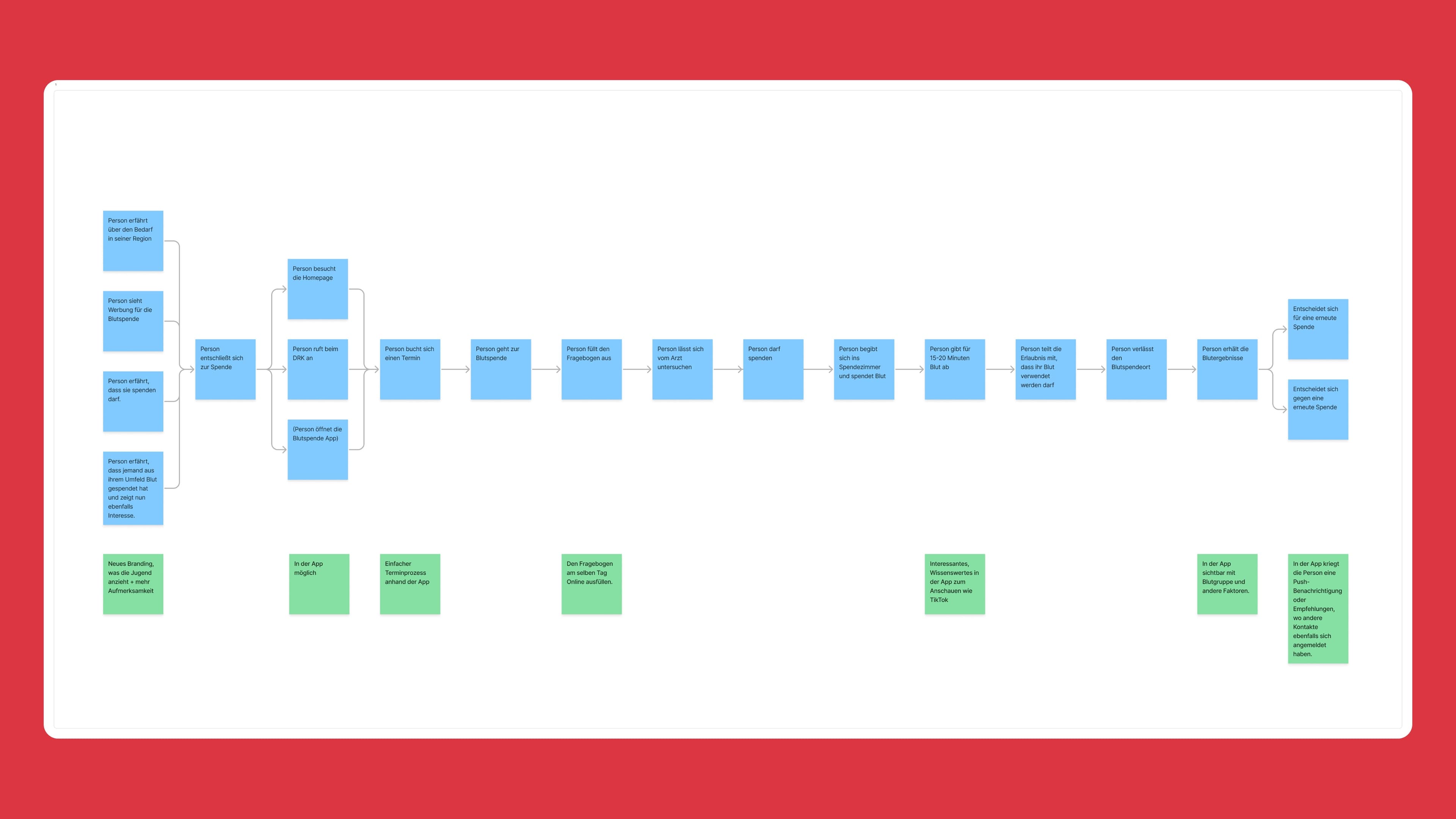
Key Features
Pulse transforms blood donation from a one-time good deed into an ongoing, community-driven experience. Our design language keeps information dense yet approachable, balancing vibrant accents with calm surfaces.
Color Palette
We chose a bold primary red to echo the DRK identity while keeping it warm and modern. Monochrome greys provide calm surfaces for dense information, and the accent gradients highlight key actions without overwhelming the experience.
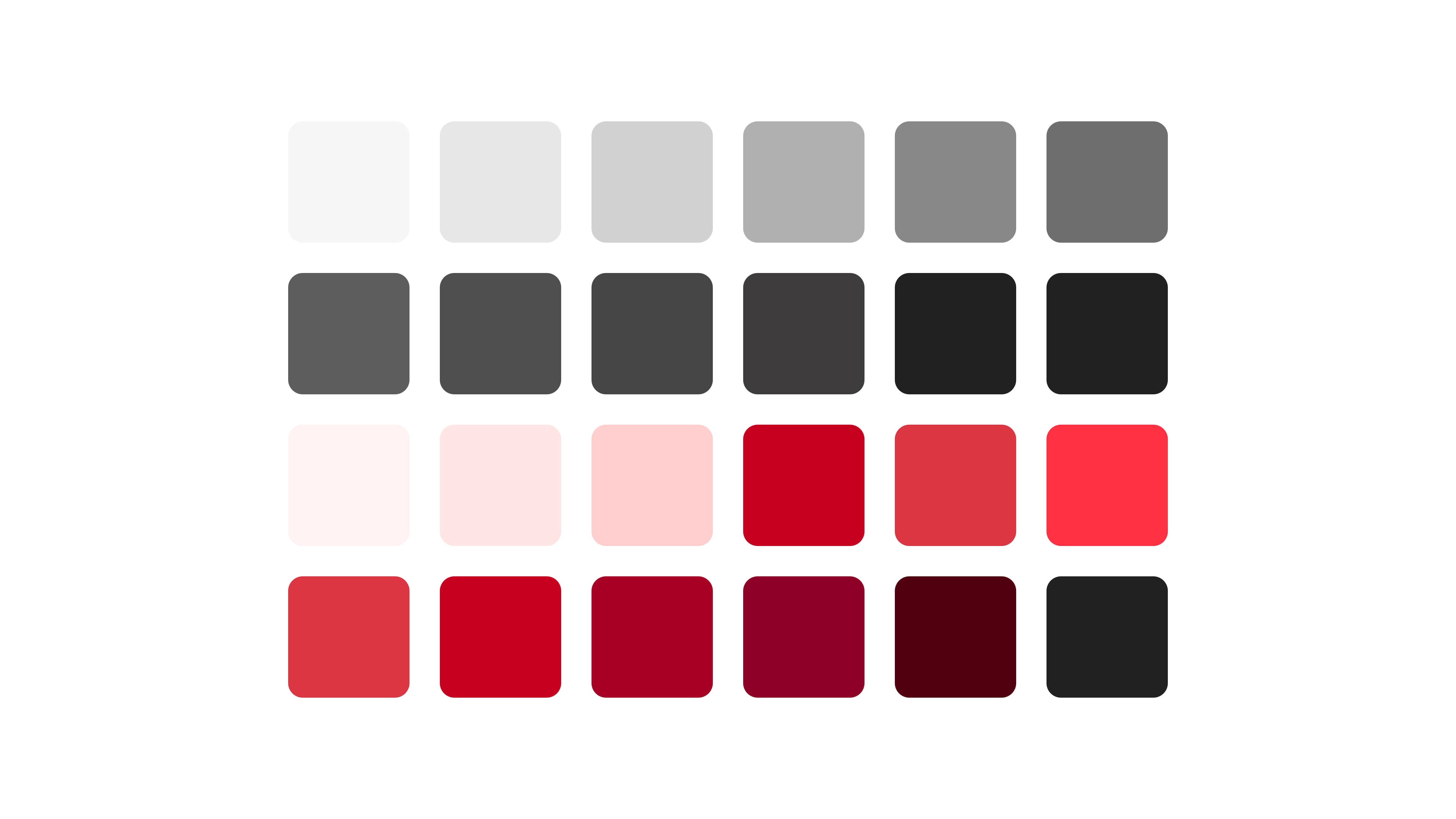
UI Feature Highlights
These interface moments show how Pulse translates research insights into guided, community-first decisions. Each screen focuses on a pivotal action—from finding an appointment to celebrating collective progress.
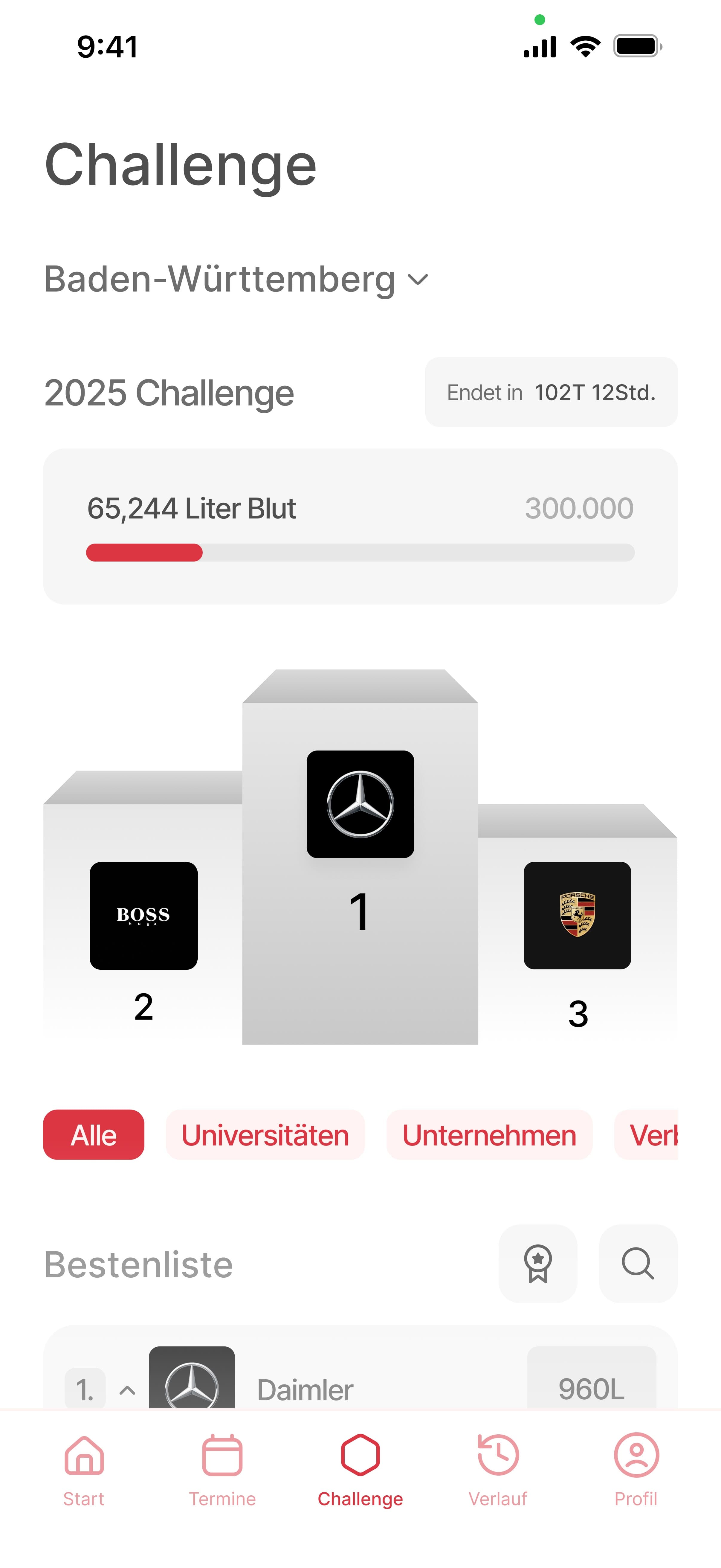
Tracks team-based donation challenges with streak progress and celebratory feedback that keep groups motivated.
Provides a quick snapshot of friends and colleagues, showing recent donations and who is lining up next.
Guides donors step by step through a transparent flow covering preparation, on-site check-in, and post-donation care.
Condenses the DRK questionnaire into clear, mobile-friendly prompts so donors finish screening without guesswork.
Surfaces nearby drives with availability filters, helping donors secure the slot that fits their schedule.
Keeps every confirmed visit and reminder in one place so donors never lose track of their upcoming commitments.
Highlights past donations, blood values, and community impact to reinforce the habit over time.
Product Screens
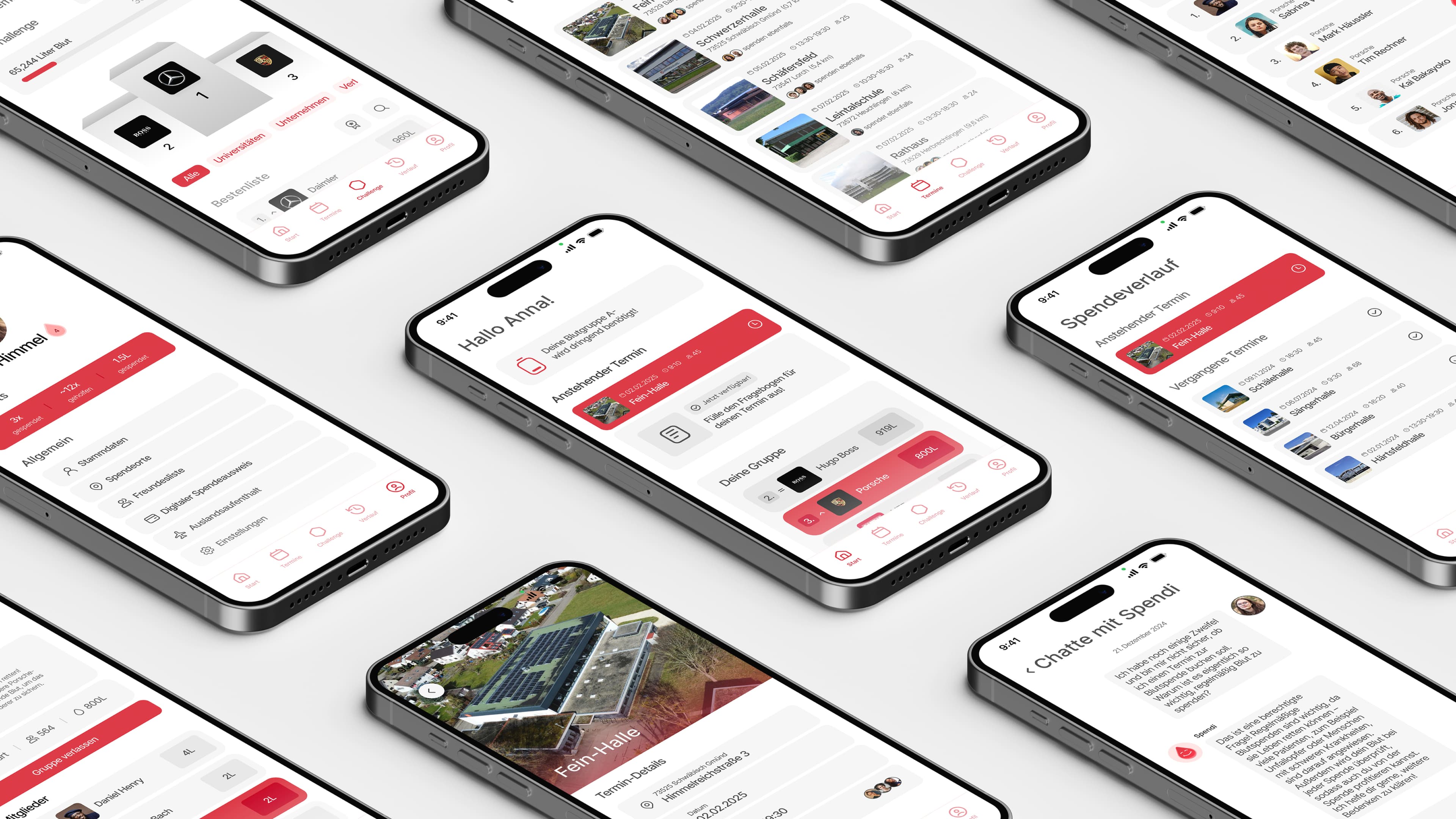
Conclusion
Working on Pulse was an eye-opening experience that showed me how design can tackle real social problems. What started as a simple question - "Why don't young people donate blood?" - turned into a comprehensive solution that addresses everything from scheduling headaches to the lack of community around blood donation.
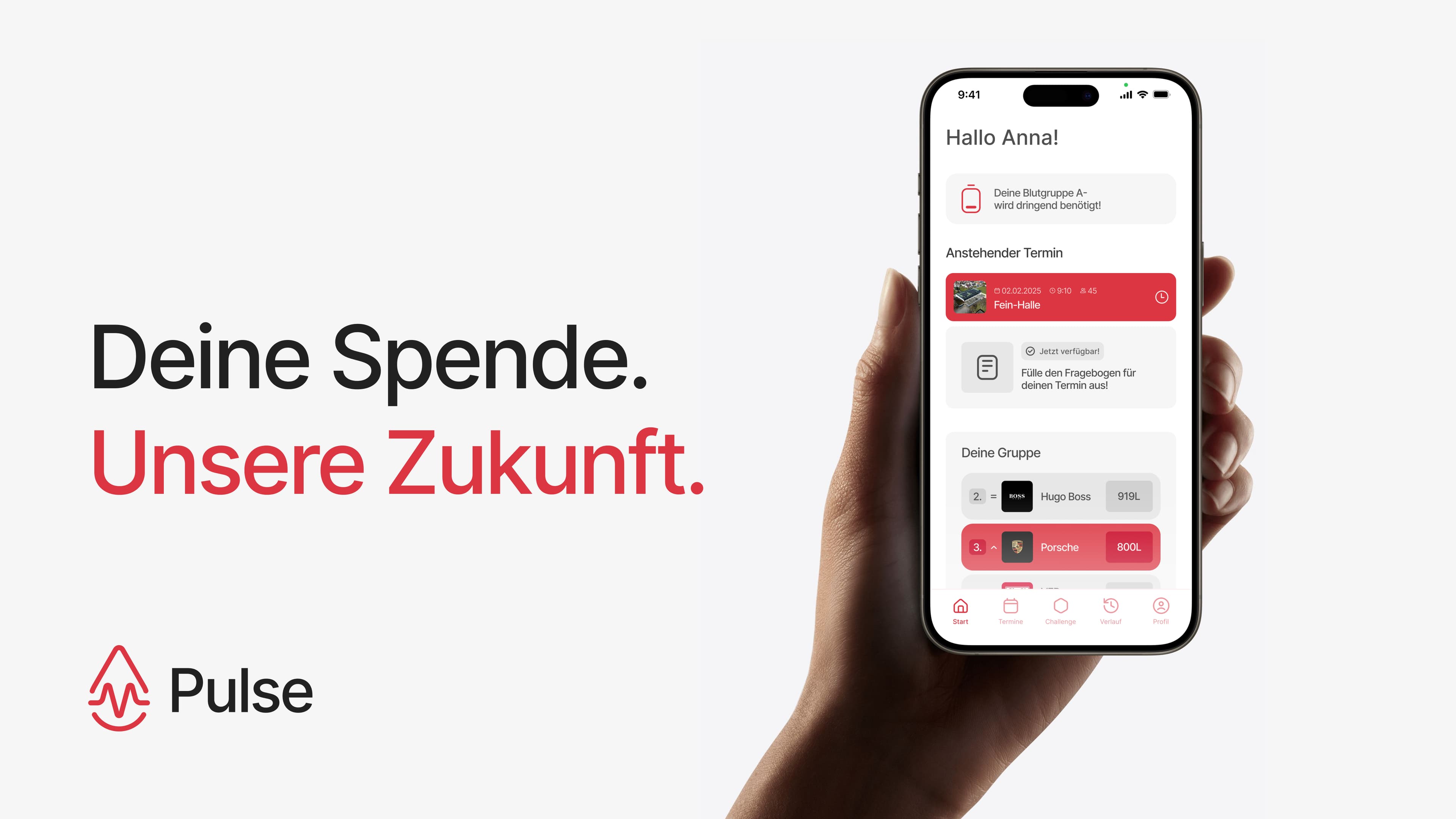
The most rewarding part was seeing how small design decisions could make such a big difference. Features like the smart appointment system and donation streaks aren't just nice-to-haves - they directly solve the pain points we discovered during our research. By making blood donation feel more like joining a community than doing a chore, Pulse has the potential to create lasting change in how young people think about giving back.





